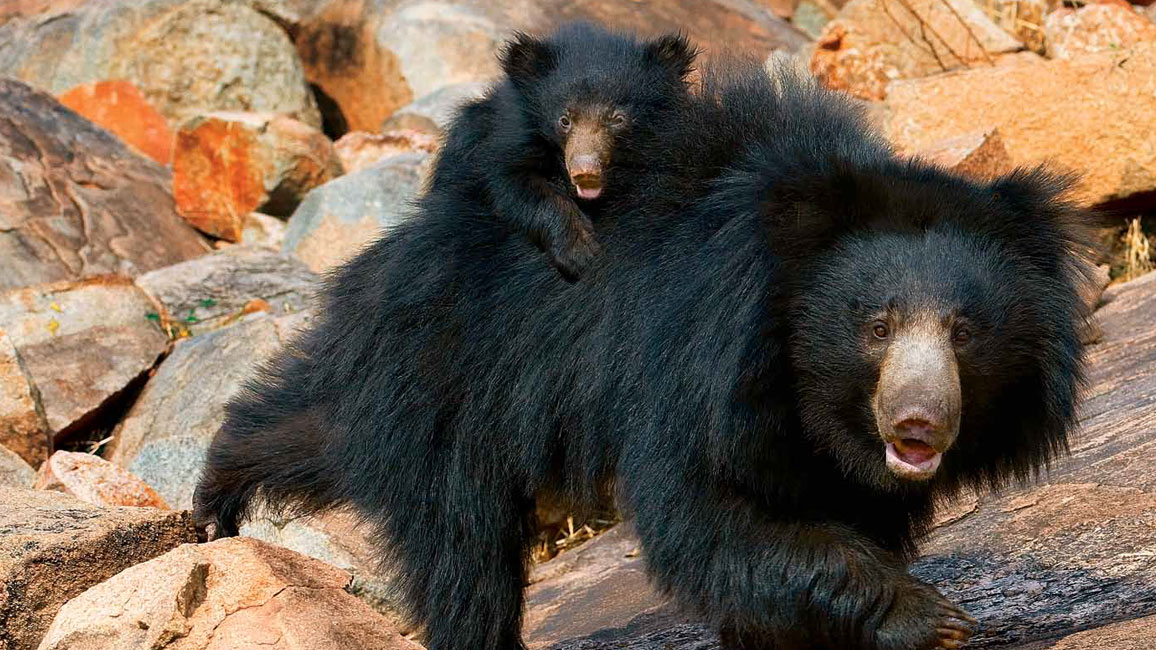
Meet the Sloth Bear
By Hannah Schardt; Photos by Axel GomilleHey, there!
I’m Samir, and this is my mom. We’re sloth bears. Our home in the steep, rocky hills of southern India can be a dangerous place for a little bear. Good thing my mom lets me climb up on her back whenever I get scared. Let’s just say I spend a lot of time up here. Want to come along for the ride?
Little Bear, Big World
You know sloths—those sluggish, tree-dwelling animals from Central and South America. And you know bears. But you might not know sloth bears. (Sloth means “laziness.” Both sloths and sloth bears move pretty slowly—but we wouldn’t call them lazy!) These dark, shaggy bears live only in South Asia, in India and the countries around it. Scientists think there are fewer than 20,000 of them left in the wild. They are shy and hard to spot, so people are just now getting to know more about these unusual bears. At first glance, you might think a sloth bear looks like a regular black bear with longer fur.
Above, little Samir bounds after his mom. He and Brother Sanjay will stay with Mama Bear for two years.
But there are some pretty big differences between sloth bears and other bears. For one thing, sloth bears are the only bears that keep their babies on their backs most of the time. Even when the babies get bigger, they scramble up on their mamas’ furry backs every time they get scared—which can be pretty often!
When they aren’t hanging out with Mom, Samir and Sanjay spend their time wrestling, playing, and exploring their rocky home (circle). Sometimes that leads to run-ins with their neighbors, such as the peacock.(seen above) Ever heard of scaredy-bears?
Growing Up
With a loud roar, Mama Bear (above) fends off a male bear that has come too close to her cubs. The cubs are almost as big as Mom, but they still cower behind her at the first sign of danger. Sloth bears are built differently from the bears you are used to. They have longer, lankier bodies and longer, stronger claws—good for climbing trees, where they find fruit and honey or just hang out. Fruit and honey are nice snacks. But sloth bears are really made for eating insects. Like other bears, they have long, pointy canine teeth. But sloth bears have no top incisors— the front teeth that we use for biting into an apple. And they have long, flexible lips.
With no front teeth to get in the way, this odd-looking mouth makes a perfect tool for sucking up ants and termites. The bears use their strong, sharp claws to break into termite mounds. Then they scarf up a meal with a noisy sluuurrp! So now you DO know sloth bears: the tree-climbing, insect-sucking, baby-toting bears of South Asia. And aren’t you glad you do?
Samir is almost grown up. See him at above on the right, peeking over a rocky ledge? He has the big, floppy ears and long, pale snout of an adult sloth bear. And now, when he wants a better view, he can climb a tree (above) instead of his mom.



















